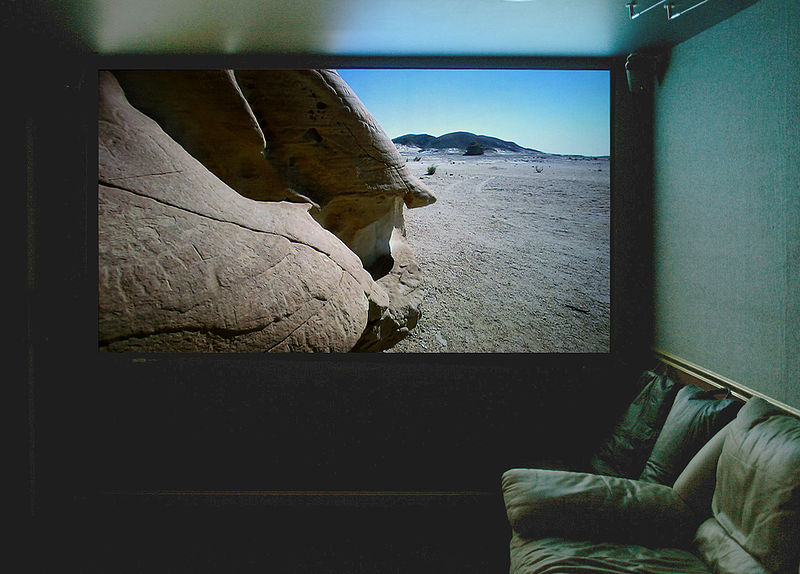
Home theater projectors are more advanced and more available than ever before, but it is important to distinguish between home theater projectors and digital-light projectors. The latter are designed for business and education use such as conferences and classrooms. While they are less expensive, they do not provide the high picture quality of home theater projectors.
A home theater can make feel like you are in a movie theater due to the size and quality of the moving picture. To choose a good home theater projector, begin by considering how you will use your projector. Set a budget. Then start studying the different designs.
The best projectors cost tens of thousands of dollars and require installation as well as regular maintenance. If budget is no object, consider cathode-ray tube (CRT) projectors. When properly set up, they exhibit the best image quality. They require maintenance only every three or four years.
For the low budget approach look at the digital-light projectors. Since some of these have loud internal fans, be sure to listen carefully as you evaluate this type of projector.
The two most important factors determining quality and price are resolution and brightness.
Brightness
A projector with a higher light output is required for a larger screen or a room with a lot of ambient light. Light output is measured in lumens abbreviated as “lm.”
A rating of 1500 to 2500 ANSI lumens (lm) or lower is suitable for smaller screens with controlled lighting or low ambient light.
Between 2500 and 4000 lm is good for medium-sized screens with some ambient light or dimmed light.
Over 4000 lm is appropriate for very large screens in a large room with no lighting control such as a conference room.
The math of projected image size can be deceptive. The total amount of light does not change. As the size increases, the brightness decreases. Image sizes are typically measured diagonally, obscuring the fact that larger images require much more light (proportional to the image area, not just the length of a side). Increasing the diagonal measure of the image by 25% reduces the image brightness by more than one-third (35%); an increase of 41% reduces brightness by half.
Resolution
You’ll want the ability to play high def movies so if you want to play an HD movie that is 720p, you’ll need a projector with a 1280 x 720 resolution. A 1080i movie requires a 1920 x 1080 resolution.
Inputs
Some of the more common inputs on the back of a video projector. Not all projectors will have all these inputs:
AC power connector.
HDMI input which allows digital transfer of video from a DVD player or other source with an HDMI output or a DVI-HDCP output via a connection adapter.
VGA-PC Monitor input which allows you to connect a computer use the projector to display your video or images.
Serial Port for external control, and other uses.
USB port for external controls and other uses.
12V trigger connection for some types of wired remote functions.
Component video inputs with green, blue, and red connectors.
S-Video input for video.
Composite, or standard analog video input which is yellow for a DVD player or AV Receiver.
Note: There are no audio inputs. Most video projectors do not have audio inputs. While HDMI can pass audio as well as video, this function is not used on video projectors. So to provide audio, you are expected to use an external home theater system, stereo system, or amplifier.
Most stores today have projectors set up side-side so you can compare the projectors in the same light conditions. You’ll be able to compare how projectors display dark scenes as well as the contrast and quality of the moving images.
Video Projection and Screens
A video projection screen can be as important as the projector itself. Video Projection Screens come in various fabrics, sizes, and prices. Take a careful look at the room you will be placing the video projector in. Is the room large enough to project the size image on the wall area you have? Will you be able to make the room be dark enough?
The distance from projector to screen will determine how large an image can be projected and the seating positions determine the best viewing distance. Most user manuals and manufacturers websites have chart and diagrams to simply this calculation. Here is a link to a Viewing Distance Calculator:
The Screen Aspect Ratio can be 4×3 or 16×9. 16 x 9 is HD which is the one you want because widescreen DVD and HDTV are now the preferred formats. The screen can be a permanent screen, a pull-down screen, or a portable screen. The pull-down screen give great flexibility so you can keep pictures or other items on the wall, when not viewing the video projector. When the screen is pulled down, it simply covers the pictures. The portable screen is the least expensive, but will require more adjusting each time you set it up.
Screen Gain Factor
Gain measures how reflect a screen is. It is a ratio of the light that is reflected from the screen compared to the light reflected from a standard white board made of magnesium oxide.
A screen with a gain of 1.0 reflects the same amount of light as that from a white board.
A screen rated at 1.5 gain will reflect 50% more light as that from a white board.
A gray screen with an 0.8 rating will reflect only 80% of the light from a white board.
Higher gain numbers reflect more light, but there are serious trade-offs. A low gain screen can be viewed from more angles than a high gain screen. Unlike a high gain screen, a low gain screen reflects red, green, and blue equally. High gain screen often have hot spots. So while a brighter screen may seem like a good idea, the best quality for a home theater environment is usually a low gain screen.






Recent Comments